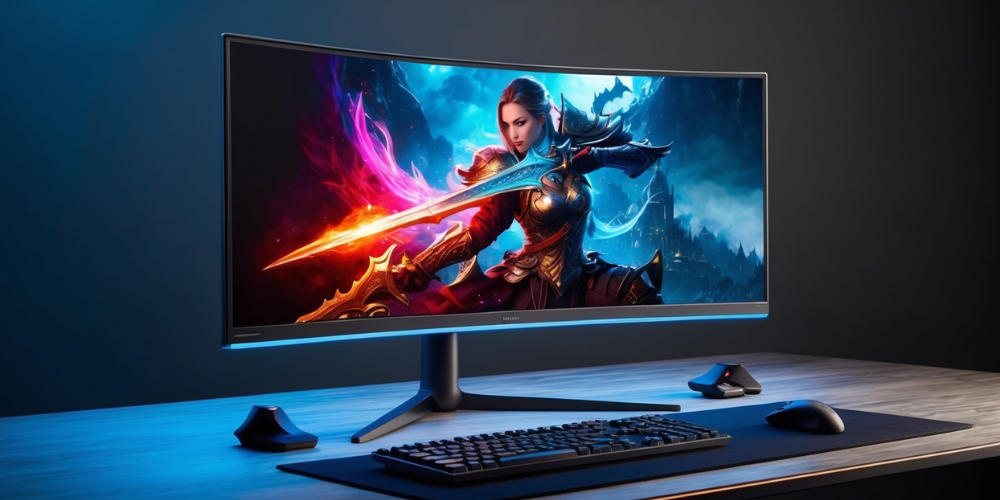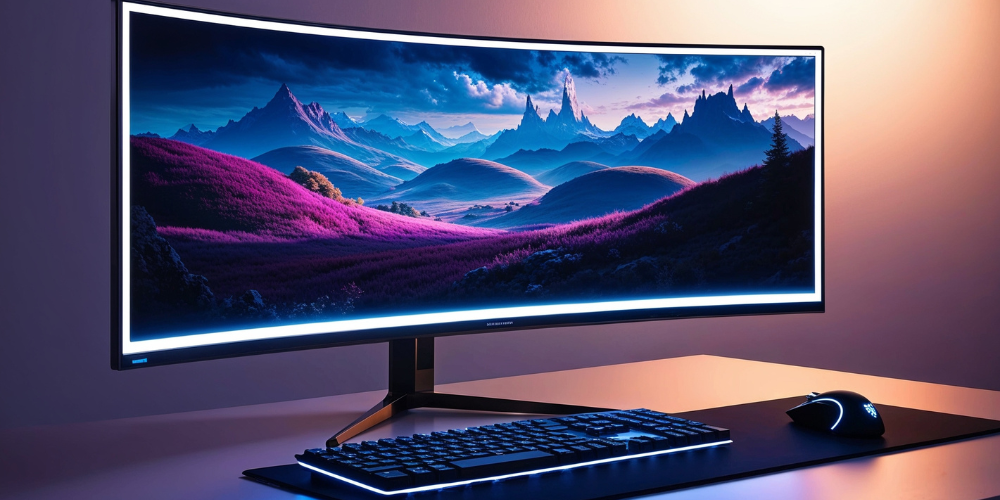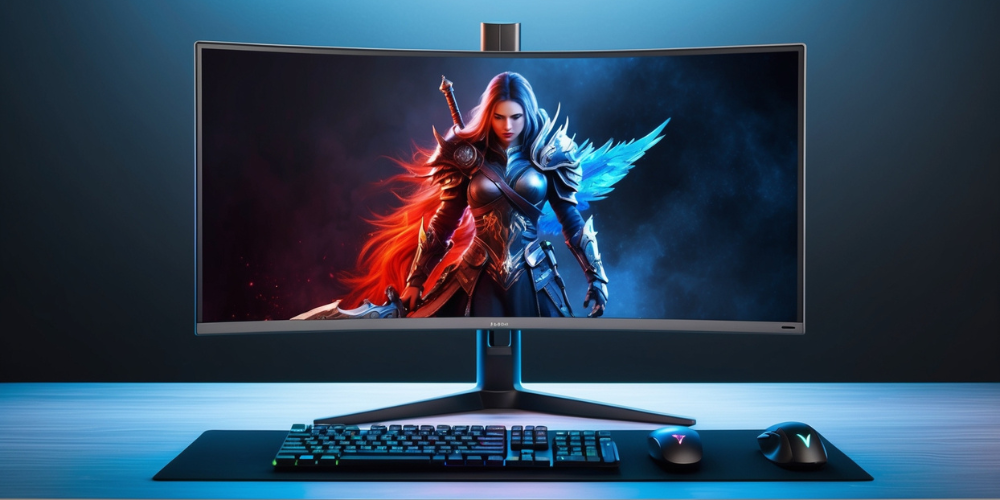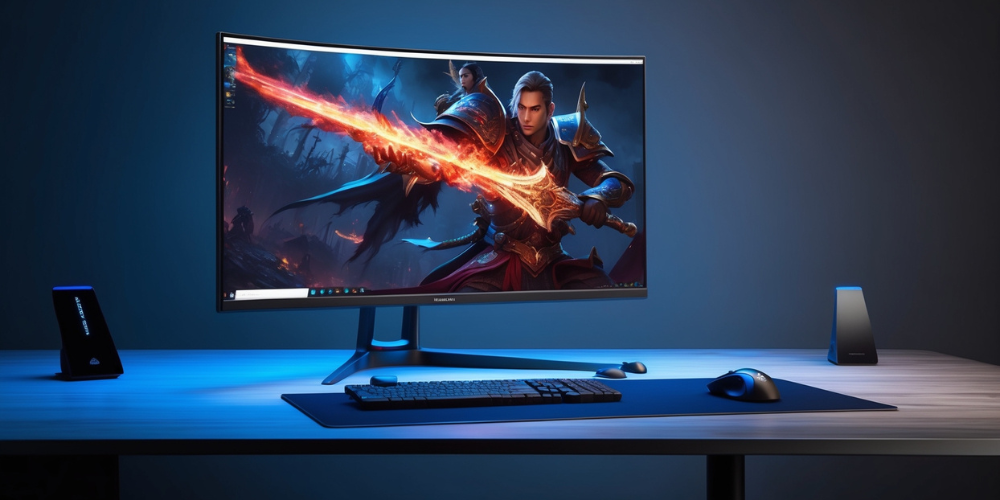The Ultimate Guide to Picking the Perfect Gaming Monitor: Refresh Rate vs. Response Time
- Nov 19, 2024
- 1051

Purchasing a new gaming monitor can seem overwhelming due to the myriad of specifications and features available. Gamers and professionals alike are inundated with technical terms that promise to enhance their viewing experience, but two of the most critical considerations are refresh rate and response time. Both have profound impacts on the performance and visual quality of a monitor. This article explores these crucial elements, helping you to understand which is more vital for your needs and how to choose the ideal gaming monitor for your setup.
Decoding Refresh Rates: The Gateway to Smoother Graphics
Every monitor displays a series of images in rapid succession to create the illusion of motion. The speed at which these images or frames are refreshed on your screen is what we call the refresh rate, measured in Hertz (Hz). For example, a 60Hz monitor refreshes the image 60 times in one second. Higher refresh rates mean smoother and more fluid motion, which is particularly beneficial in activities demanding fast responses, such as gaming or watching action-packed media.

Advantages of High Refresh Rates
- Smoother Motion: High refresh rates ensure that motion appears smoother, which is critical in fast-paced gaming environments.
- Reduced Motion Blur: The clarity in images is enhanced when motion blur is minimized, offering a more pleasurable viewing experience.
- Enhanced Gaming Performance: In competitive gaming, where every millisecond counts, higher refresh rates provide a noticeable advantage, allowing players to process visual information more quickly.
Standard Refresh Rates Explored
- 60Hz: This is the baseline for most monitors, perfect for simple tasks and casual gaming.
- 75Hz to 120Hz: A step up from the standard, providing a noticeable improvement for a variety of fast-paced activities.
- 144Hz and Above: Preferred for competitive gaming, offering ultra-smooth visuals that ensure precise reactions and movements.
Understanding Response Time: Clarity in Every Pixel
Response time refers to how quickly a pixel can change from one color to another, a factor crucial for reducing ghosting or blurring during transitions. It is measured in milliseconds (ms), and the lower the response time, the quicker the transition, enhancing the sharpness and clarity of images.
![]()
The Impact of Lower Response Times
- Minimized Ghosting: Lower response times help diminish ghosting effects, where a trail of images lingers after fast-moving objects.
- Sharper Images: A reduced response time results in clearer and sharper images, contributing to a seamless experience in high-motion activities.
- Improved Gaming Fidelity: For gamers focused on fast-action gameplay, low response times are essential to prevent motion blur and lag.
Typical Response Time Ranges
- 1ms – 5ms: Optimal for gaming and activities requiring minimal ghosting or blurring.
- 5ms – 10ms: Adequate for general tasks and media consumption, offering commendable performance.
- 10ms and Above: This may cause noticeable blurring in high-speed scenarios, which is less desirable for gaming.
Choosing Between Refresh Rate and Response Time: A Balance of Priorities
When it comes to selecting a gaming monitor, understanding the relative importance of refresh rate and response time is crucial for catering to your unique uses. Let’s explore how these factors weigh differently depending on your primary activities:

Optimizing for Gaming
For those who prioritize gaming, both refresh rate and response time are vital. However, their importance can vary:
- Competitive Gaming: In games where every second counts, a high refresh rate (120Hz or above) paired with a low response time (1ms – 3ms) can provide a tangible edge, ensuring smooth motion and reduced blurring.
- Casual Gaming: A refresh rate of 60Hz to 75Hz can suffice for leisurely gaming. Nonetheless, a response time of less than 5ms helps minimize ghosting, enhancing the gaming experience.
Professional Applications
Professionals may need different specifications depending on their field:
- Video Editing: Editors need higher refresh rates for smooth video playback, particularly with high-frame-rate content. However, as long as response time is under 10ms, ghosting should not be an issue.
- Graphic Design and Photo Editing: For these applications, color accuracy and resolution often matter more than refresh rates or response times. A standard 60Hz refresh rate with low response time suffices, helping maintain image clarity without compromising color fidelity.
General Usage and Media

For everyday computing activities such as web browsing and media consumption, the demands are less stringent:
- Everyday Tasks: A simple setup of a 60Hz refresh rate with response times under 10ms is generally adequate. Although higher refresh rates can improve the experience, they are not necessary.
- Media Consumption: A refresh rate between 60Hz to 75Hz with a response time under 10ms should be plenty, ensuring smooth video playback and reducing distraction from blurred images.
Anticipating Future Developments: The Evolving Landscape of Monitors
As technology progresses, the standards for refresh rates and response times continue to evolve, providing ever more seamless experiences. Here are some notable trends to watch for:
Emerging Technologies and Trends
- Higher Refresh Rates: With 240Hz refresh rates and beyond, monitors are offering unparalleled motion clarity, perfect for those who require the utmost precision.
- Adaptive Sync Technologies: Technologies like G-Sync and FreeSync help to ensure that the monitor refresh rate synchronizes with the GPU output, reducing tearing and delivering a smooth visual experience.
- Advanced Panel Innovations: Developments in OLED and QLED panels are enhancing refresh rates and response times while boosting color accuracy and contrast.
Effective decisions about monitor specifications rely on understanding the nuances of refresh rates and response times. Whether you are a seasoned gamer seeking an edge, a professional pursuing color accuracy, or an everyday user looking for balanced performance, knowledge of these factors allows for informed choices, optimizing satisfaction and enhancing the overall experience.